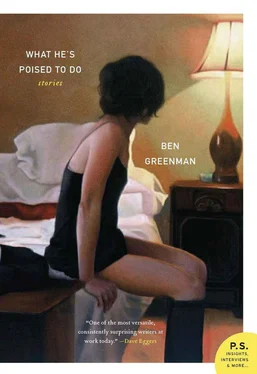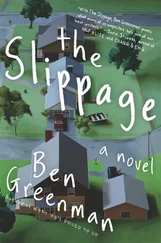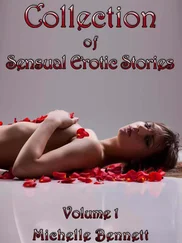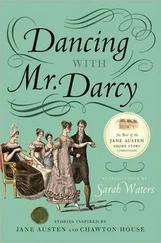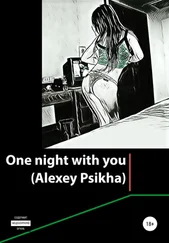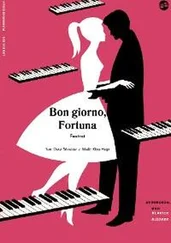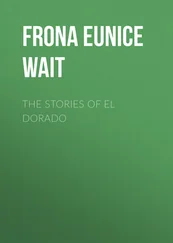CAL: And did you know from the start that you wanted to use letters to tell these stories?
BEN: Well, all words are made of letters.
CAL: Hilarious. I mean the other kind of letters: the ones people write to each other. The first version of this collection was published in a limited-edition box called Correspondences . Was it designed explicitly as a set of stories about letters and letter-writing?
BEN: I started from the idea that I was writing stories about the disconnections between people — about romantic frustration, about misunderstanding. And then I noticed that many of them were set in the recent past, at a time when people communicated (or miscommunicated) through letters. That’s where Alex came in.
CAL: Alex, you run an innovative, small publishing house in Brooklyn called Hotel St. George Press. How did you connect with Ben for this project?
ALEX: I had always been a fan of Ben’s writing, as far back as Superbad , and I met him at a party in Brooklyn. I was talking to Ben’s wife, Gail, not knowing she was married to him, and I happened to mention that I dug Ben Greenman. She said, “That’s my husband. Hey, Ben, come meet a fan!” I thought she was kidding, but there he was. We immediately started talking about doing a book together. At that time, Aaron Petrovich and I had done a few titles with Hotel St. George, but we were looking to shift from trade paperback to handmade letterpress books. We wanted to work more directly with our authors, to go beyond just taking a manuscript and putting it between covers. We wanted layout and typography to reflect or amplify the themes of the book.
BEN: This would have been at the beginning of 2008. I had a novel, Please Step Back , coming out in 2009. I didn’t want to shoehorn in another traditional book in the midst of that schedule, but the idea of doing a nontraditional book really appealed to me.
ALEX: Right. We pretty quickly realized that the running theme of letters was a way to unite these stories into a collection, but then we had to decide what “collection” meant. These were also great stories about human interaction, thwarted love affairs, rivalries, disappointments, and enduring love, and I noticed that there were invisible threads that connected the stories.
CAL: What do you mean by invisible threads?
BEN: Yeah. What do you mean?
ALEX: I just thought that sounded cool. No: themes would recur, as in any collection, but in interesting ways. There was the story about a man who came from Cuba to the United States and continued to write letters to the woman he loved there, even after she was out of his life; to me, that seemed connected to another story, about a guy in Nebraska who was grappling with a troubled marriage. When Ben came up with the idea that these weren’t connections, but correspondences, that gave us an organizing principle and a title: Correspondences .
BEN: It probably started as a pun, but then it turned into something much richer — thanks in large part to the design. Alex and Aaron designed a box with four foldout panels; each panel held a little accordion book, and each little accordion book contained two stories. Those were the pairs of stories that I saw as corresponding with each other, just as the characters in the stories advanced their lives by corresponding with each other. And then we came up with the Postcard Project to complete the package.
CAL: Tell us more about that.
ALEX: When we designed the case, it was meant to hold eight stories in four accordion books. Then one afternoon we started talking about the fact that the box was a very exclusive form. It folded up. There was a bellyband around it. It kept people out, in some way. As a remedy, Ben suggested writing a story that was intentionally incomplete and inviting readers to contribute to it. We printed that story, “What He’s Poised to Do,” on the actual casing, and then we put a postcard in the fourth pocket, where the fourth booklet would have gone. The reader got to write back to us, the publisher, to complete the story. We posted some of the responses to the Mail Room of the Hotel St. George Web site.
BEN: People loved that Postcard Project.
ALEX: I think it brought in a different kind of appreciation. Because the box was a high-end, limited-edition object, I thought we’d get attention from design magazines and book blogs. We did. But then there were all the people who seized on the idea of the Postcard Project as an interactive fiction experiment. Which was cool, but also a little frightening. When something sounds “high concept,” people sometimes assume it’s not superior to a description of itself — that it doesn’t transcend its own novelty.
CAL: Funny you should say that, because that’s how I encountered it. I was out in Los Angeles on business with Carrie Kania, our publisher, and we went into Book Soup, the wonderful bookstore on Sunset, and both of us were exploring the store, looking for hidden treasures. At one moment or another, each of us separately stumbled across an elaborate endcap display the store had devoted to Correspondences . I was astonished by the innovative approach to the form and the intricacy of the package. But I didn’t buy it then, in part because I was worried about crushing it in my luggage, but also because I was feeling protective of it. I knew Carrie would love it the way I did — this is the kind of thing we’re always driving each other crazy with — but I felt such a sense of discovery, and I wanted to be able to order it when we got back and present it to her as if out of nowhere. Back in New York, I walked into Carrie’s office, and there was a copy on her desk. She’d bought it at Book Soup and hadn’t mentioned it to me.
BEN: It’s like an O. Henry story.
CAL: It gets stranger. A few months later, I was judging a live fiction event in New York for The L Magazine , and Ben and Aaron Petrovich were two of the other judges. We were all introduced, but it was only after we’d been there a while that I realized that these were two of the people responsible for Correspondences : the author and the publisher. At that point, I hadn’t yet read beyond the cover story: I think I was so taken with the box as an object that I was reluctant to read further into the collection. Then I went home and read the stories, and they were exquisite. I was entranced by the elegance of Ben’s writing, and by the fact that his characters were flesh-and-blood people, even the ones he found odd. I called Aaron, and we started talking about developing a more traditional paperback edition.
ALEX: Did you think right away that you’d need to add stories?
CAL: I thought it would be important, yes. Luckily, Ben had written more.
BEN: I wrote more pieces as a direct result of that original box. I did lots of interviews about the HSG edition, and often the interviewers’ questions actually sparked new stories. In the spring and summer of 2009, I went on tour for Please Step Back , and that strange journey — cities I didn’t know very well, people I met on the road — also helped with new material.
CAL: My sense of Ben’s vision for this new version came into focus after he sent me his first version of the full collection; a number of the added stories were longer, more complex pieces that extended what he’d done in the earlier stories.
BEN: In a strange way, the second phase worked like a correspondence between me and the original box.
ALEX: I notice that you decided to keep “What He’s Poised to Do,” which was the interactive story connected to the Postcard Project.
BEN: We did keep it, after some discussion.
CAL: It might be an understatement to say we kept it. It became the title story.
BEN: But it’s no longer interactive. For this edition, we decided to do without the participatory element of the story and let it stand on its own, as a kind of establishing vignette.
Читать дальше
